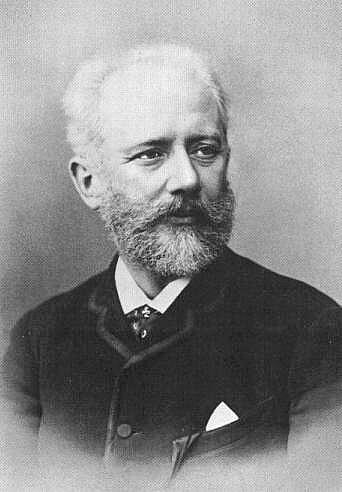When it’s time to seek out new decorations for the Christmas holiday, we might visit stores or browse online in search of those regal, festive figures, the nutcrackers. Often dressed in red, green, and gold, they stand ready to perform their duty, be it crack a bowl full of roasted chestnuts as part of a party snack or grace a holly-covered mantle near the sparkling Christmas tree. And not only are nutcrackers crafted in “snack” size, these days there are stately giant nutcrackers found in holiday displays all over, from North to South, East to West, heralding the season on snow-covered stretches or warm, sunny lawns.
In the Beginning…
The first nutcrackers were utilitarian tools for the kitchen, replacing hammers or stones, for the express purpose of opening hard-shelled nuts,. Over time, creative German craftsmen began fashioning these tools into highly designed yet functional dolls with powerful jaws. They looked like toys, but they still could crack a mean walnut while serving as a gift given to loved ones and friends.
At a symbolic level, these toy nutcrackers served as a kind of tutelary presence (what the ancient Greeks called a daimon), intended to protect the owner and keep evil spirts at bay. In spite of their stoic appearance, each nutcracker seems to have its own personality, which makes them popular, collectible items. Yet how and when did they become known worldwide and, more interestingly, how the heck did they become associated with Christmas?
The Earliest-Known Sentient Nutcracker
And what a dark tale it is! Readers might be surprised to learn that very likely the first appearance of a nutcracker as an animated character is in a rather disturbing story published in 1816 by E.T.A. Hoffman, entitled “The Nutcracker and the Mouse King.” In this odd fairytale (the ending of which could be described as either happy or grim), a young girl named Marie is given an ugly nutcracker doll on Christmas Eve. When Marie falls asleep, the nutcracker comes to life in her dreams, and over time she falls in love with him. One night, while Marie slumbers, the seven-headed Mouse King and his minions rush into her room and engage in a ferocious battle with Marie’s dolls and the Nutcracker, who takes on the role as their leader.
During the fight, Marie falls and cuts her arm severely. The next morning, wounded and frightened, she tries to tell her family what happened, but they refuse to believe her. The following nights, as Marie recovers, she is plagued by nightmares featuring the Mouse Queen and King. She then learns that the Nutcracker had once been a real and handsome man, but the enraged Mouse Queen had cursed him and turned him into a nutcracker. To break the curse, Marie agrees to marry the Nutcracker. He takes Marie into the doll kingdom, where they will live forever, away from family and all she knew.
It’s possible to see that as a satisfactory denouement. Still, it seems like a rough life for a little girl who is still young enough to be enchanted by dolls!
The Nutcracker Comes into His Own as a Christmas Character

The Nutcracker as a memorable Christmas figure might have been doomed (and rightly so, perhaps) to oblivion had it not been for a two-act ballet for which Pyotr Tchaikovsky wrote the score.
The ballet was based on a novel that French author Alexander Dumas had adapted from Hoffman’s fairytale—with the difference that it had a much lighter tone. The ballet debuted in St. Petersburg, Russia, in December, 1892.
Though it received mixed reviews from attendees (some thought it was “insipid,” while others found it appealing), this ballet introduced a Nutcracker who not only comes to life, but does so not as a small toy but as a life-sized figure who bravely fights the invading Mouse King and, with the help of the girl Clara, defeats him. With that, the nutcracker changes back into the prince he once was and takes Clara to a magical world filled with candy and decorations, where she is celebrated as a hero.

The Giant Nutcracker Crosses the Ocean and Becomes an American Holiday Hero
In spite of its initial lukewarm reception, the Nutcracker ballet did not die. Following the Russian Revolution of 1917, a number of Russian ballerinas and composers left for the United States. They brought with them the love of the dance as well as the story. In 1944, the first United States adaptation of The Nutcracker was performed by the San Francisco Ballet. Director and choreographer Willam Christensen indicated later that he had no idea he had helped launch a holiday tradition.
In the meantime, actual nutcrackers from Europe were crossing the Atlantic in the duffle bags of American soldiers following their service in in World War II. These souvenirs were cherished and, with the growing popularity of the Christmas ballet, nutcrackers found their places alongside gingerbread men, toy soldiers, and reindeer during December holiday celebrations.
Further cementing the Nutcracker figure in the American psyche, Walt Disney used music from the ballet, “The Nutcracker Suite,” in his 1940 animated film, Fantasia. This charmed film audiences, and even those who weren’t familiar with the ballet came to know and love the music.
(Much later, the Disney company even went so far as to expand the story of a life-sized nutcracker named Captain Philip, who protects young Clara in the 2018 fantasy film, The Nutcracker and The Four Realms.)
Yet it wasn’t until 1954 that the quintessential version of the Nutcracker ballet was first performed. Choreographer George Balanchine’s production premiered at City Center, New York. An immediate hit, it has been performed in New York every year since. Balanchine’s version—his vision—of the ballet has become the most popular and most imitated. There have been countless other productions across the nation, but most depend on Balanchine’s staging to give the ballet its signature elegance and unforgettable charm.
And so the Nutcracker—at first a small treasure and then a tall, brave Christmas champion—has sealed his place at the table of much-loved, traditional holiday characters. A somewhat disturbing story from the early 19th century evolved over time into one not only suitable for children, but one that is beloved and heroic. From Hoffman’s original (and rather creepy) fairytale, to Dumas’ gentler narrative, to Tchaikovsky’s balletic version, to Christensen to Balanchine and onward to Disney, the Nutcracker has been resurrected and redeemed. And that is why giant Nutcrackers—some reaching a height of 12 feet!—in their festive red, green, and gold uniforms, have such an honored place as part of Christmas decorations and displays. They stand proudly in the snow or on the grass, ready to protect and bring cheer to holiday celebrants.



